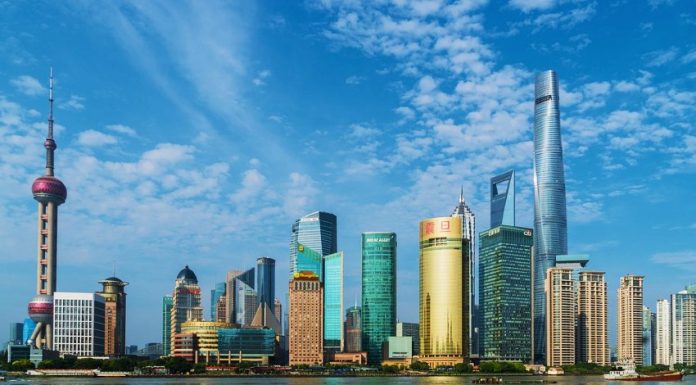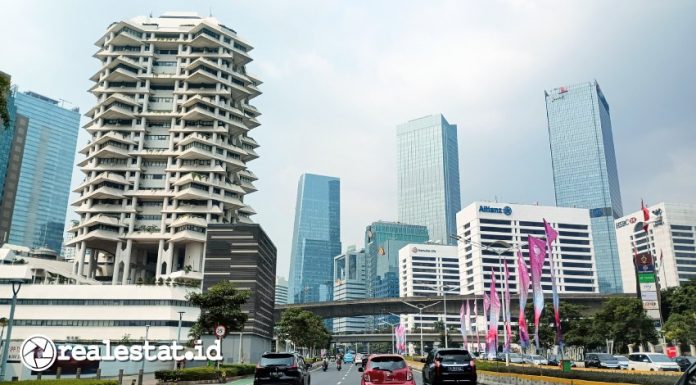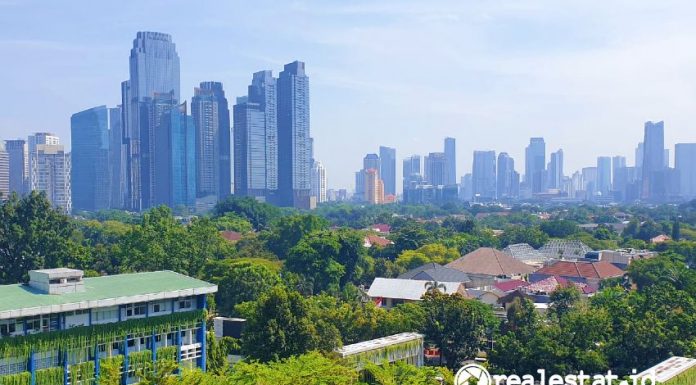RealEstat.id (Jakarta) - Since its first inception, e-commerce has taken the local retail industry by storm. Boosted by rapid development on internet and mobile technology, e-commerce had seen tremendous growth over the past decade in Indonesia.
Generally, e-commerce requires much more logistics space compared to traditional retail as most of retailer's inventory is stored in the warehouse, rather than spaced out between warehouse and stores. In addition, online retailers tend to have a larger array of products in their inventory, thus requiring relatively bigger and more comprehensive storage that can accommodate and easily adapt to the changing business trends.
According to Savills World Research, despite its tremendous growth, current supply-chain ecosystem in Indonesia is still poor and the sector lacks a number of key factors to support the ongoing growth. Worldbank report in 2018 mentioned that Indonesia’s Logistic Performance Index scored only 3.2 out of 6.
Read More: Office Sector in The New Normal: CBD to Survive, Suburbs May Prosper
Major issues that put Indonesia in a low rank are lack of transportation infrastructures as well as red tapes and complicated regulations, which resulted in a high cost environment. As such, the country’s logistics sector is still behind its neighbouring countries such as Malaysia, Thailand and Vietnam in terms of sector’s competitiveness and efficiencies.
Nevertheless, the growth in Indonesia’s ecommerce continued to drive demand for better logistics space, which trigger more new developments. This had attracted a number of local companies as well as foreign and international investors and developers to race in the competition to take the first-mover advantages.
In the past few years, big institutional investors like GIC and regional logistics developers such as LOGOS and ESR have expanded to Indonesia. After China, Indonesia is seen as the next big thing in Asia’s e-commerce market and the logistics sector should thrive from it.
Logistics in Indonesia
One of the integral drivers of Indonesia’s logistic sector growth is the import and export activity. However, between 2019 and 2018, Indonesia experienced a reduction in the number of export and import. While Indonesia exported USD 180 billion and imported USD 188 billion, the number deplete by about 8% in 2019 to USD 167 billion for the number of export goods and USD 170 billion for the number of import goods.
Despite decreasing from the previous year, Indonesia is still fifth among southeast Asian countries, Following behind Singapore, Thailand, Vietnam and Malaysia. Our export and import value are also a reflection of our current logistics performance index.
The logistics performance index is an interactive benchmarking tool created to help countries identify the challenges and opportunities they face in their performance on trade logistics and what they can do to improve their performance. With the logistic performance index, we can identify and compare our trade and logistic quality with other countries. With a total score of 3.15, our Logistic Index Performance is still lacking behind compared to neighboring countries.
Read More: Luxury Apartment Trends in Jakarta
On the other hand, the highest-ranked country in ASEAN, Singapore currently scored 4, with the highest score being the timeliness and logistics competence. Some aspects that need some adjustment are the efficiency of the clearance process and trade and transportation related infrastructure.
On the other hand, the timeliness of Indonesia’s logistics is on par with Vietnam which is the third-best within the ASEAN region with a 3.67 score. Indonesia’s timeliness score showed an improvement compared to its score in 2016 where Indonesia scored 3.46. This improvement is partly impacted by the growth of warehouses and logistic facilities throughout Indonesia.
Among the types of warehouses mentioned above, modern warehouses continued to grow and gain strong interests from local and foreign investors as it helps companies such as e-commerce to cut the logistic and handling cost of the product. A notable international player who develops modern warehouses is LOGOS who build its first modern warehouse in Bekasi.
Read More: Indonesia: The Fifth Most Cost Competitive Manufacturing Hub in The World
On the other hand, local players like Mega Manunggal Property have spread their modern warehouse footprint to various locations like Bekasi, Bogor, and Depok. Modern warehouses typically have 24- hour security systems, high floor-to-ceiling height (typically between 5 to 6 meters), lots of loading bay (typically located on each floor), various facilities such as offices, canteen, and canteen, and also several cargo lifts to accommodate the multiple floors in the building.
Not only that, modern warehouse also use various IT infrastructure to supply, manage and ship goods. With the increase in demand for warehouses, land price for such development continued to grow. Currently, the average asking price for industrial land in Jabodetabek is Rp 3,826,000 per square meter, which is 40% higher than that in 2017 at Rp 2,712,500.
Meanwhile, the average asking rent for typical warehouse in Greater Jakarta is about Rp 56,000/sqm/month. Furthermore, the current asking price for a warehouse in prime areas is about Rp 80,000/sqm/month. Currently, the most expensive area for logistics outside Jakarta is Bekasi, while the most expensive area within DKI Jakarta is Sunter. With the continuous demand in the logistics sector, we are predicting annual rental growth of 4% - 6% p.a.
The Rise of Industrial Areas
Over the past few years, trade war between the United States and China has impacted a lot on developing countries throughout Asia. Many companies who have factories in China are considering to move to other developing countries with fairly affordable labor like India and Vietnam. One notably big company is Apple, which is currently in the process to move its iPad and MacBook production to Vietnam. Until June of this year, there are more than 100 companies who are about to relocate from China.
Indonesia saw this as an opportunity to increase foreign direct investment and as a way to expose Indonesia’s resources to global companies. Hence, the government has pushed many private and public organizations to push the construction of integrated industrial districts that could supplement international companies’ relocation to various locations in Indonesia.
Read More: Explore Workplace and Operational Efficiency in the Age of COVID-19
Currently, the government has proposed to build 13 new industrial zones by the end of 2021. Each zone would have a minimum of 50 hectares of land, which is distributed in Java, West Papua, Sulawesi, North Maluku, Kalimantan, and Sumatera. Java will be the main area for consumer goods production, while others will focus on industrial production.
The government will also make sure the transportation facilities to and from each industrial districts will be revitalized to ease mobility and facilitate the logistics activity of investors in all the industrial areas. With integrated infrastructure underway and a shift in climate investment due to the new job creation law, it is predicted that more than 150 new companies will relocate to several industrial zones in multiple areas in Indonesia.
Local e-commerce Growth
The increase of warehouses and industrial districts is driven by the growth of the e-commerce and logistic sector in Indonesia. For instance, several e-commerce companies like Lazada, Shopee, and BukaLapak require a lot of warehouses as part of their promise to speed up logistics and ease both consumer and manufacturers. For that, with the continuous usage of e-commerce and the development of technology, we are expecting the demand for warehouses will continue to increase.
High e-commerce utilization is closely associated with rapid technological improvement. In 2020, the advancement in technology has pushed Indonesia’s internet penetration to 73%, compared to that of 5 years ago at 43%. Moreover, it is predicted that in the next five years, internet penetration will grow up to 89% of the total population. As a result, Indonesia’s internet users have also grown tremendously over the past decade. According to 2018 statistics, around 65% of Indonesia’s population are active users, a 25% increase compared to 2010.
Read More: Adjusting Property Investment and Property Development During The Pandemic
Supported by the rapid development of the internet in Indonesia, we can now fulfill our needs online. Between 2015 and 2019, e-commerce value in Indonesia rose by 88% to around USD 21 billion. Moreover, about 86% of the population in 2019 use the internet daily. Being a front runner in the ASEAN region, Indonesia is expected to grow even further over the next 5 years and will likely strengthen its position as the core of South East Asia’s internet economy.
Among existing e-commerce platforms in Indonesia, the most popular media with the highest users is the marketplace (B2C and C2C), followed by online travel and ride-hailing services. The highest transacted products in the local marketplace are fashion items and electronics. This segment had enjoyed steady growth over the past few years on the back of robust consumption.
Periodically, e-commerce platforms provide promotions to encourage customers to shop in their application. Online travel e-commerce Traveloka often provides free holiday discounts and free breakfast promo. On the other hand, marketplaces like Tokopedia, Lazada, and Shopee race to provide incentives such as expedited or free shipping, special dates discounts, installment payment, and many more.
Read More: Riyadh Group Indonesia Officially Enters Healthcare Services Business
Other ways e-commerce attracts consumers are the effortless payment options for every people. E-commerce like Shopee and Gojek now create their own e-wallet that could be used to shop in their application, consult a doctor, eat in a restaurant, or even pay phone bills. These types of options typically attract consumers by providing extra discounts and also cashback. Ecommerce companies like Tokopedia also work with other fintech companies like Ovo to ease consumers' payment without the need to do manual transfer payment.
On the other hand, customers who do not have access to any online payment options are still able to purchase goods through cash on delivery options. By having so many ways to make payments, e-commerce platforms can accommodate every people throughout Indonesia. Currently, the most favored means of payment in Indonesia is Bank Transfer followed by digital wallet and credit card.








